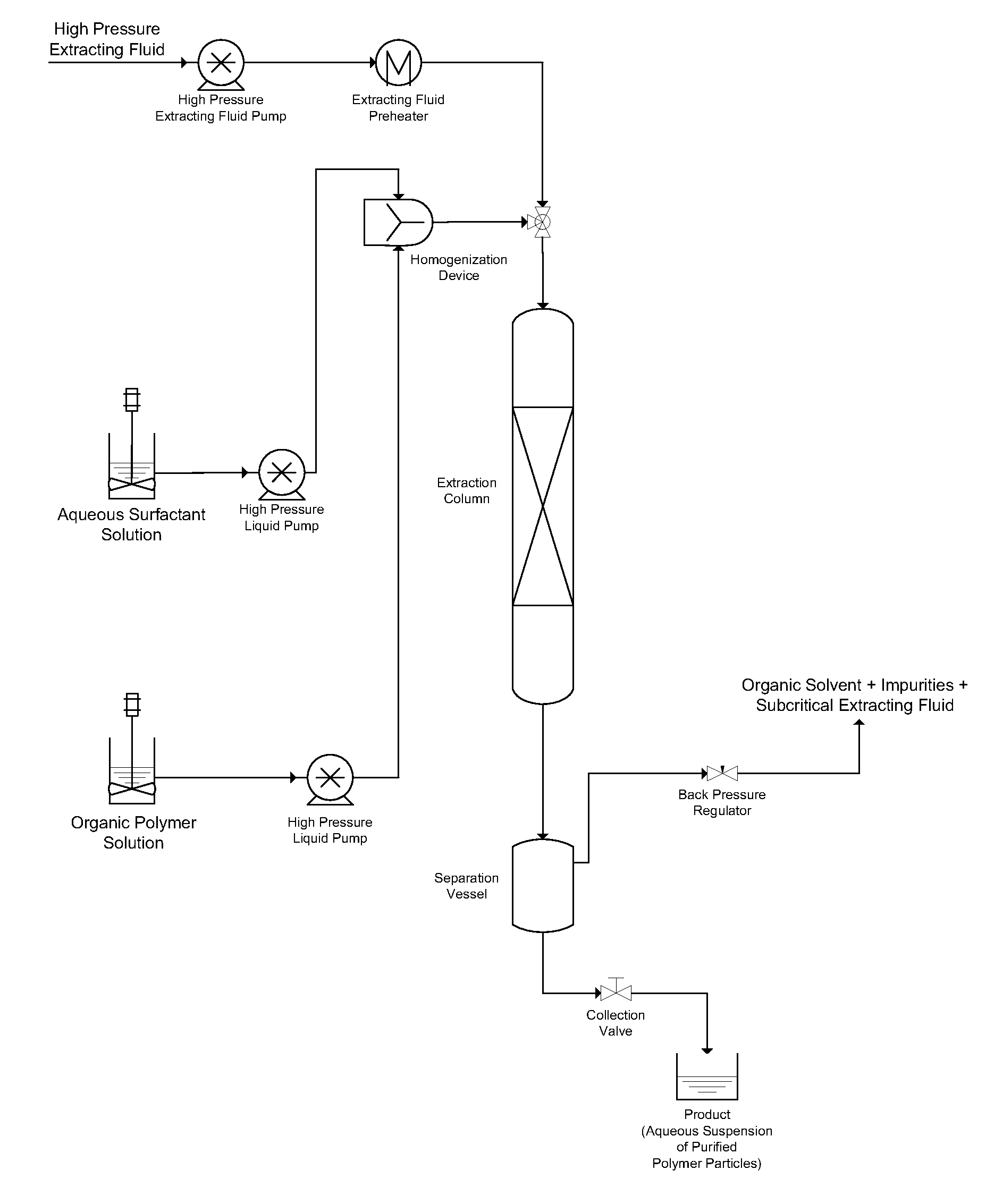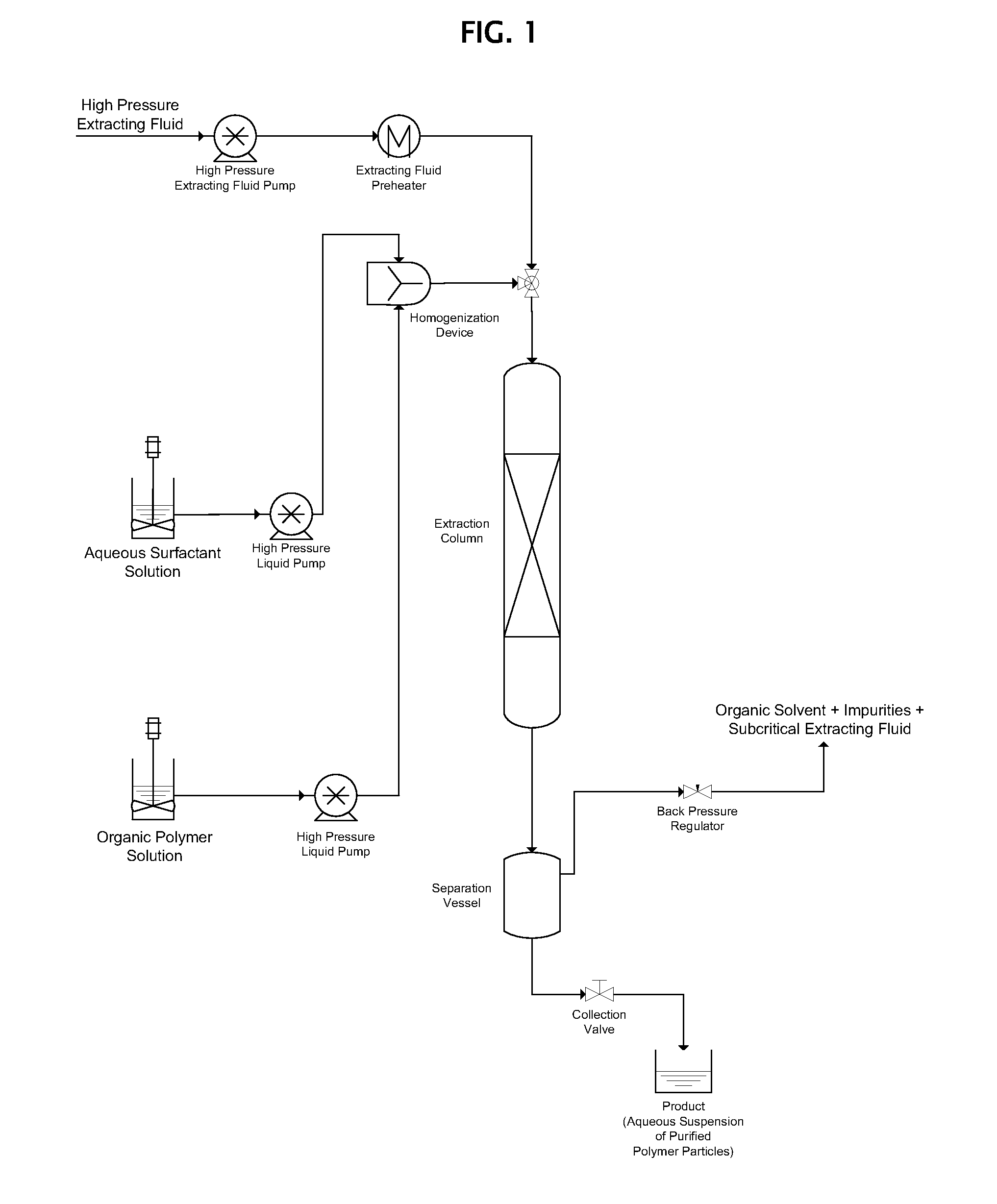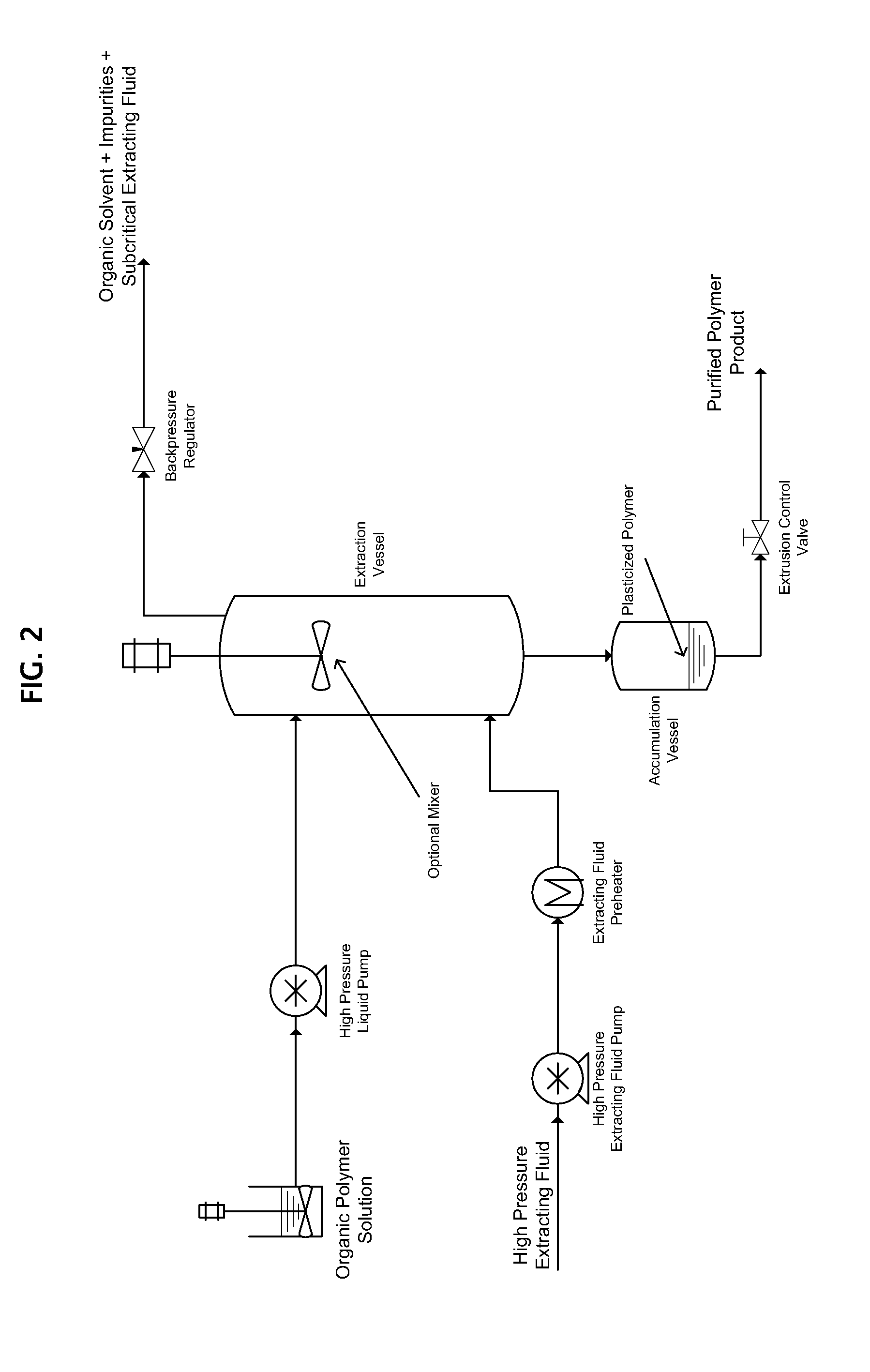Methods for the purification of polymers
a polymer and purification technology, applied in the direction of bulk chemical production, etc., can solve the problems of requiring affecting the mass transfer of the polymer, and affecting the plasticization of the polymer, so as to achieve the effect of less mechanical intensity and improved mass transfer
- Summary
- Abstract
- Description
- Claims
- Application Information
AI Technical Summary
Benefits of technology
Problems solved by technology
Method used
Image
Examples
example 1
[0034]10 parts by weight of poly(lactic-co-glycolic acid) (“PLGA”) obtained from Lakeshore Biomaterials under the trade designation 5050DL 4A were dissolved in 90 parts by weight of dichloromethane (“DCM”) to form an organic polymer solution. Separately, 3 parts by weight of polyvinyl alcohol (“PVA”) were dissolved in 97 parts by weight of water to form an aqueous solution.
[0035]The organic polymer solution and the aqueous solution were co-introduced into a static mixing device. The flow rate of the organic polymer solution into the static mixing device was 1.0 ml / min, and the flow rate of the aqueous solution into the static mixing device was 4.0 ml / min. The organic polymer solution and the aqueous solution were homogenized in the static mixing device, forming an emulsion in which the organic polymer solution comprised the discontinuous internal phase and the aqueous solution comprised the continuous external phase.
[0036]A 5.0 ml / min. flow of the emulsion formed in the static mixin...
example 2
[0038]5 parts by weight of PLGA obtained from Lakeshore Biomaterials under the trade designation 5050DL 4A were dissolved in 95 parts by weight of acetone to form an organic polymer solution.
[0039]A 1.0 ml / min. flow of the organic polymer solution was simultaneously, but separately, introduced into an extraction vessel such as shown in FIG. 2 together with a 50 g / min. flow of SC CO2 by means of high-pressure pumps. The temperature within the extraction vessel was maintained at 75° C., and the pressure was maintained at 200 bar, which was sufficient to maintain the SC CO2 in a supercritical state.
[0040]In the extraction vessel, the organic solvent in the organic solution dissolved into the SC CO2 causing the PLGA to form a plasticized polymer melt, which flowed into an accumulation vessel connected to the bottom of the extraction vessel as shown in FIG. 2. The plasticized PLGA melt was extruded from the bottom of the accumulation vessel in a continuous manner while the SC CO2 laden w...
PUM
| Property | Measurement | Unit |
|---|---|---|
| flow rate | aaaaa | aaaaa |
| flow rate | aaaaa | aaaaa |
| pressure | aaaaa | aaaaa |
Abstract
Description
Claims
Application Information
 Login to View More
Login to View More - R&D
- Intellectual Property
- Life Sciences
- Materials
- Tech Scout
- Unparalleled Data Quality
- Higher Quality Content
- 60% Fewer Hallucinations
Browse by: Latest US Patents, China's latest patents, Technical Efficacy Thesaurus, Application Domain, Technology Topic, Popular Technical Reports.
© 2025 PatSnap. All rights reserved.Legal|Privacy policy|Modern Slavery Act Transparency Statement|Sitemap|About US| Contact US: help@patsnap.com



